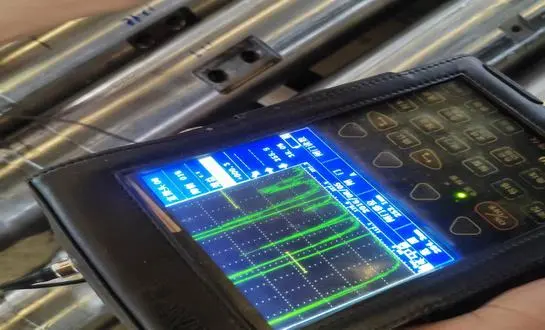What Heat Treatment Methods Enhance Shaft Forging Toughness?
Heat treatment plays a pivotal role in enhancing the toughness of forged steel rotor shafts. The right heat treatment process can significantly improve the material's ability to absorb energy and resist crack propagation. Let's explore some effective heat treatment methods that can boost the toughness of shaft forging:
Quenching and Tempering
Quenching and tempering is a widely used heat treatment process for improving the toughness of forged steel rotor shafts. The process involves heating the shaft to its austenitic temperature range, followed by rapid cooling (quenching) in a suitable medium such as oil or water. This creates a martensitic structure, which is then tempered at a lower temperature to relieve internal stresses and improve ductility while maintaining strength. The tempering temperature and duration can be adjusted to achieve the optimal balance between strength and toughness for the specific application of the rotor shaft.
Normalized and Tempered Treatment
Normalizing followed by tempering is another effective heat treatment method for enhancing the toughness of forged steel rotor shafts. This process involves heating the shaft above its critical temperature, holding it for a specific time, and then allowing it to cool in still air. Normalizing helps refine the grain structure and eliminate any inhomogeneities that may have formed during the shaft forging process. Subsequent tempering further improves the toughness by relieving residual stresses and optimizing the microstructure.
Austempering
Austempering is a specialized heat treatment process that can significantly enhance the toughness of forged steel rotor shafts. In this method, the shaft is heated to its austenitic temperature and then quenched in a molten salt bath maintained at a temperature just above the martensite start temperature. This results in the formation of bainite, a microstructure that offers an excellent combination of strength and toughness. Austempering can be particularly beneficial for rotor shafts subjected to high impact loads or cyclic stresses.
Best Alloying Elements for High-Toughness Forged Steel Shafts
The selection of appropriate alloying elements is crucial in developing high-toughness forged steel rotor shafts. These elements can significantly influence the mechanical properties and microstructure of the steel, thereby affecting its overall toughness. Let's examine some of the most effective alloying elements used in shaft forging to enhance toughness:
Nickel (Ni)
Nickel is a valuable alloying element for improving the toughness of forged steel rotor shafts. It enhances hardenability and promotes the formation of fine-grained structures, which contribute to increased toughness. Nickel also improves the steel's resistance to brittle fracture at low temperatures, making it an excellent choice for shafts operating in cold environments. Typically, nickel content ranging from 1% to 3.5% can significantly boost the toughness of forged steel shafts.
Chromium (Cr)
Chromium is another essential alloying element that contributes to the toughness of forged steel rotor shafts. It improves hardenability and promotes the formation of fine carbides, which enhance both strength and toughness. Chromium also increases the steel's resistance to corrosion and wear, making it particularly suitable for shafts exposed to harsh operating conditions. A chromium content of 0.5% to 1.5% is often used in high-toughness shaft forgings.
Molybdenum (Mo)
Molybdenum is highly effective in improving the toughness of forged steel rotor shafts, especially when used in combination with other alloying elements. It enhances hardenability and promotes the formation of fine-grained structures, which contribute to increased toughness. Molybdenum also helps prevent temper embrittlement, a phenomenon that can reduce toughness in heat-treated steels. A typical molybdenum content of 0.2% to 0.5% can significantly enhance the toughness of shaft forging.
Vanadium (V)
Vanadium is a powerful grain refiner that can substantially improve the toughness of forged steel rotor shafts. It forms fine, stable carbides that inhibit grain growth during heat treatment, resulting in a finer grain structure and enhanced toughness. Vanadium also contributes to increased strength and wear resistance. A small addition of 0.1% to 0.2% vanadium can have a significant impact on the toughness of forged steel shafts.
How Does Grain Flow Optimization Improve Rotor Shaft Durability?
Grain flow optimization is a critical aspect of shaft forging that can significantly enhance the durability and toughness of rotor shafts. The arrangement and orientation of grains within the metal structure have a profound impact on the mechanical properties of the final product. Let's explore how grain flow optimization contributes to improved rotor shaft durability:
Controlled Deformation
During the forging process, careful control of deformation parameters such as temperature, strain rate, and forging ratio can lead to optimized grain flow. This controlled deformation aligns the grains in a manner that enhances the shaft's ability to withstand stress in critical directions. For rotor shafts, this typically means aligning the grain flow along the longitudinal axis, which is the primary direction of stress during operation. This alignment significantly improves the shaft's resistance to fatigue and fracture, thereby enhancing its overall durability.
Grain Refinement
Grain refinement through optimized forging processes can lead to a finer, more uniform grain structure in the rotor shaft. Finer grains generally translate to improved mechanical properties, including higher strength and toughness. The increased number of grain boundaries in a fine-grained structure acts as barriers to crack propagation, enhancing the shaft's resistance to fatigue and fracture. This refined grain structure contributes significantly to the improved durability of forged steel rotor shafts.
Elimination of Defects
Proper grain flow optimization during shaft forging can help eliminate or minimize internal defects such as voids, inclusions, and segregation. These defects can act as stress concentrators and initiation points for cracks, significantly reducing the shaft's durability. By ensuring a uniform and optimized grain flow, the likelihood of these defects is greatly reduced, resulting in a more homogeneous and durable rotor shaft.
In conclusion, improving the toughness of a forged steel rotor shaft involves a multifaceted approach that combines advanced heat treatment methods, careful selection of alloying elements, and optimized grain flow during the forging process. By employing these techniques, manufacturers can produce rotor shafts with superior toughness, durability, and overall performance. As the demand for high-performance components continues to grow across various industries, the ongoing research and development in shaft forging technologies will undoubtedly lead to even more innovative solutions for enhancing rotor shaft toughness. For more information on advanced forging techniques and high-performance shaft solutions, please contact us at oiltools15@welongpost.com. Welong is committed to delivering cutting-edge forging solutions that meet the evolving needs of industries worldwide.





